When it comes to gardening, Epsom salt– or scientifically referred to as magnesium sulfate- is among the commonly used supplements for many years now, especially in growing flowers. The essay will try its best to comprehensively analyze the benefits and disadvantages associated with using Epsom salt in gardening. This will be done by looking at its chemistry, how it works and what conditions can cause it to improve plant vitality and flowering capacity. Thus, if you are aware of what is behind Epsom salt and its significance, you will not have any trouble deciding whether you should include this material into your agricultural programs so that you achieve better outcomes.
What is Epsom Salt and How Does It Work?
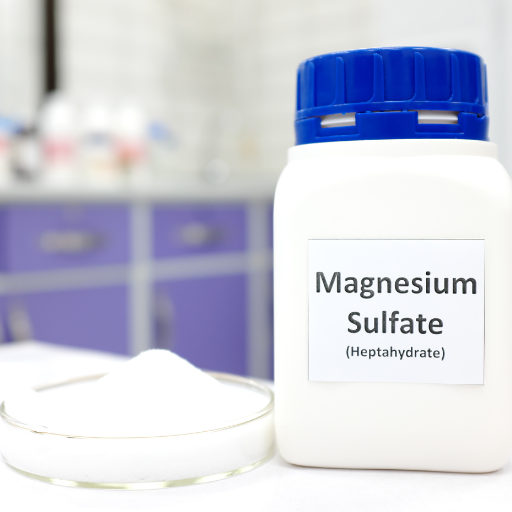
Magnesium sulfate, also called Epsom salt, has a chemical formula of MgSO₄ and it is made up of magnesium, sulfur, and oxygen. The compound dissolves quite easily in water and breaks down into magnesium and sulfate ions that plants can absorb through the roots and leaves. Magnesium is essential for photosynthesis because it helps in the production of chlorophyll, while sulfur is necessary in the synthesis of some enzymes as well as amino acids. Therefore, with these trace elements present in Epsom salts, there is an increase in nutrient uptake efficiency, thus improved photosynthesis rates leading to strong growth rates for plants as they produce flowers.
Understanding the Composition of Epsom Salt
Epsom salt contains magnesium sulfate heptahydrate which has a molecular formula of MgSO₄·7H₂O. This means that seven molecules of water are attached to every molecule of magnesium sulfate. Sulfur constitutes about 13% while Magnesium contributes approximately 10% to mass composition; both are important nutrients required for plant growth and development. Chlorophyll production depends on adequate magnesium levels since chlorophyll molecules contain a central atom of this element needed for trapping light energy during photosynthesis. On the other hand, sulfur forms amino acids such as cysteine and methionine that make up proteins’ structures. At 20°C, this substance’s solubility reaches 71 g/100 mL indicating rapid assimilation within plants making them become usable immediately.
The Role of Magnesium and Sulfur in Plant Health
These minerals are also crucial in many plant activities, positively affecting their health status and general life span stage developments. To begin with, without sufficient amounts of magnesium, there would not be enough chlorophyll pigment, which enables green plants to capture light energy for photosynthesis. Moreover, its presence supports carbohydrate metabolism enzyme activation and nucleic acid synthesis. In addition, a vital nutrient like sulfur is responsible for amino acids such as cysteine and methionine which build the proteins. Also involved in synthesizing coenzymes, this element assists in growing plants.
For photosynthesis to proceed effectively, plants must have an available supply of magnesium. This is because chlorophyll molecules contain a central magnesium ion that absorbs light energy. It regulates energy transfer and conversion during photosynthesis. On the other hand, sulfur ensures that protein structures are properly formed and functioning by participating in amino acid production, which helps to develop enzymes and regulate metabolism.
Technical Parameters:
- Magnesium Sulfate Solubility: 71 g/100 mL at 20°C.This high solubility allows for efficient nutrient uptake and immediate transport within plant systems.
- Magnesium Content: Approximately 10% of Epsom salt’s mass is needed for chlorophyll production and several enzymatic reactions.
- Sulfur Content: About 13% of Epsom salt’s mass is used as an amino acid precursor and source of enzyme-related constituents.
With knowledge about these roles and indications, gardeners will effectively use Epsom salt to increase intake of nutrients by the plant, speed up metabolic processes that affect fertility in general, promote overall healthy conditions required for proper growth rates and productivity levels in crops or any other vegetation being cultivated or grown.
Epsom salt’s interaction with soil and plants
Epsom salt, also known chemically as magnesium sulfate (MgSO₄), interacts with the soil and plants in several ways, essential for nutrient uptake and plant growth. When applied to soil, the high solubility (71 g/100 mL at 20°C) of Epsom salts ensures that magnesium and sulphur nutrients are easily taken up by plants through their roots. This fast availability is important for rapid correction of deficiency situations.
The substance contains approximately 10% magnesium, an element found in the cells’ chlorophyll molecules. Magnesium improves photosynthesis to help a plant grow stronger and more productive. In addition, it acts as a co-factor in several enzymes involved in energy transfer reactions and carbohydrate metabolism.
On the other hand, sulfur accounts for about 13% of its mass and is used in the synthesis of cysteine, including methionine; these amino acids are components of proteins that act as catalysts in biological reactions. Sulfur also occurs in some coenzymes inside living organisms. The latter play further roles serving different physiological functions.
Adding Epsom salt to your soil could increase the availability of nutrients and, hence, better uptake rates, thereby enhancing the general health of your crops. This knowledge, therefore, provides a more systematic approach to using Epsom Salt in scientifically correct horticultural practices.
Benefits of Epsom Salt for Flowering Plants
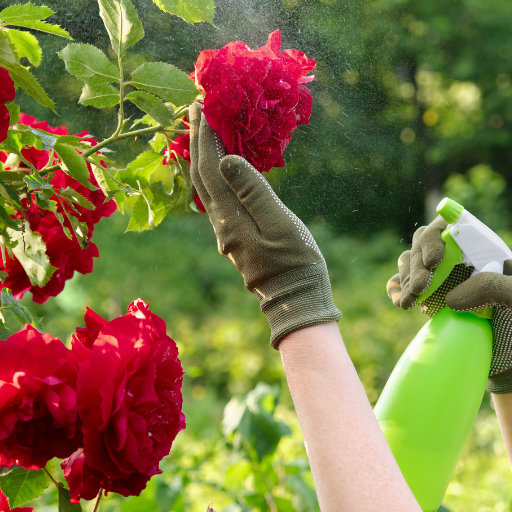
Flowering plants have numerous advantages of using Epsom salts because of their magnesium and sulfur composition. As such, the magnesium in Epsom salt boosts the synthesis of chlorophyll, which is important for photosynthesis and making plants green. Consequent to this, there is vigorous, good growth. The increase in the number and size of flowers due to photosynthesis enhancement results in more energy available for the plant.
Further, Sulfur contributes to vital amino acids and proteins that promote healthy plant development. It also produces vitamins essential during plant growth. With improved nutrient absorption rates, Epsom salt guarantees that plants get all the required ingredients to thrive.
Also, much emphasis has been put on the role that it plays during seed germination stages by enabling them to resist adverse environmental conditions; it also enhances the beauty of flowers by making them appear brightened with colors and the blooming period elongated. This makes flowering plants healthier and more attractive; hence, gardeners can make use of Epsom salts.
Enhancing Nutrient Uptake in Flowers
Epsom salt contains magnesium, among others, which significantly improves the uptake of nutrients by flowers. Magnesium supports chlorophyll production, which boosts photosynthesis, leading to efficient energy production and nutrient assimilation. On the other hand, Sulfur plays a crucial role in root development and the formation of essential amino acids for easy movement or transport of nutrients across various parts of the plant system. In low pH soils, Epsom salt comes out clearly where it enables balance availability, thus allowing plant roots access all necessary minerals for optimal growth and productivity. Thereby, Epsom salt becomes a useful amendment for enhancing robustness and productivity, befitting flowered products.
Boosting Chlorophyll Production for Vibrant Blooms
The inclusion of Epsom salts into horticultural practices can increase chlorophyll synthesis and, hence, create more vibrant pea blossoms. Photosynthesis in plants is only possible due to the presence of a pigment called chlorophyll, which converts light energy into chemical forms. Epsom salt’s main constituent, magnesium is crucial in chlorophyll synthesis. This ensures plants maintain high levels of chlorophyll, improving photosynthesis efficiency. As such, this leads to better growth rates, increased energy production, and brighter flowers longevity. The latter effect is seen more in soils that have low amounts of magnesium, making it an important requirement for successful flowering.
Strengthening Plant Structures for Better Flowering
Epsom salts can bring great improvements in plant structure, a factor that can lead to enhanced blooming. The stabilization of cell walls through magnesium and the development of new cell membranes are some important contributions made by Epsom salt’s magnesium [3]. Such enhancements make sure plants grow firm stems and properly anchored roots capable of supporting blossoms’ weight. Furthermore, sulfur aids in formation of different enzymes plus proteins required for effective metabolic processes within the plant body.(4) Such strengthened structures are highly efficient for nutrient absorption and transport, especially during the flowering Phase with high nutrient demands (Vogel et al., 2002). Improved structural integrity supports higher quality & quantity of blooming while making them resistant against harrsh effects such as drought or pest attacks.
How to Apply Epsom Salt to Flowering Plants
Using Epsom salts on flowering plants comes with several options. The first one is that Epsom salt can be added directly to the soil. For most plants, including roses and tomatoes, mix one tablespoon of Epsom salt per gallon of water and apply this solution to the soil each month during the growing season. On the other hand, it can be used as a foliar spray as well. Dissolve one tablespoon of Epsom salt in a gallon of water and thoroughly spray this mixture onto the leaves, allowing for direct absorption. This method is typically employed to address acute magnesium deficiencies. Another way is by sprinkling around the base of plants at a rate of one tablespoon per foot of plant height then watered in well Repeat this treatment every six weeks can help maintain magnesium levels in the soil. Plan response should always be monitored and frequency adjusted depending on specific needs.
Using Epsom Salt as a Soil Amendment
Using Epsom salt as a soil amendment can improve plant health and productivity by directly acting upon nutrient imbalances while enhancing the structure of soils. In terms of its functions in plants’ various physiological processes, Epsom salt mostly supplies magnesium (Mg) and sulfur (S). Magnesium is a vital component found in chlorophyll, which is responsible for photosynthesis, while sulfur forms part of amino acids, enzymes, and proteins, among others, which are important for the growth process.
Ideally Epsom salt should be applied at 1-2 tablespoons per 9 square feet garden space before planting according to specifications provided by some authors; otherwise termed recommendations based on technical considerations when applying epsom salts into soils technically it is recommended that: “one should use 1-2 tablespoons per every nine square feet garden space worked into the ground before planting”. When used as an amendment for established plants, dissolve 1 tablespoon per gallon of water and apply around the base of each plant monthly during the growing season. A broadcast application rate of 3 pounds per 1250 square feet followed by adequate watering can help relieve magnesium deficiency in lawns.
Before applying it, however, it is important to assess soil magnesium levels as recommended, usually through a professional soil test that will show optimum magnesium concentration between 50 and 120 parts per million (ppm). Adhering to these technical parameters ensures that Epsom salt is used effectively, promoting healthier plant growth and improved yield.
Creating an Effective Epsom Salt Foliar Spray
Several essential steps must be followed to create an effective Epsom salt foliar spray that facilitates maximum nutrient uptake from leaves by plants. To prepare the spray, dissolve one tablespoon of Epsom salt in a gallon of water. This concentration is widely recommended across multiple authoritative horticultural sources. For best results, make sure you spray your foliage early or late in the day when less evaporation occurs, hence better absorption.
Thoroughly cover the leaves, especially the undersides where stomata are located when spraying them with the solution. In this case method helps to enhance absorption rates for both sulphur and magnesium if applied properly it has been proven that using this product at bi-weekly intervals during growth period serves as perfect treatment for magnesium deficiencies hence healthy plant growth.
Guideline for Mixing and Applying Epsom Salt Solutions
When mixing epsom salt solutions, it is important to get accurate measurements to ensure your plant is healthy. For use as a soil application, a standard dose of 1 tablespoonful of Epsom salt per foot of plant height needs to be mixed thoroughly into the soil and then watered in. This method guarantees uniform distribution and uptake by the root system. An alternative solution for well-established garden beds would be applying 1 cup of Epsom salt in 5 gallons of water with a garden sprayer; this results in broad coverage.
Specific crops like tomatoes and peppers can benefit from drenching their roots with one gallon of water containing one tablespoon of Epsom salts at fortnightly intervals. Research reveals that this concentration aids fruit set and development through increased magnesium availability. When magnesium deficiency is observed in HVAC systems, usage frequency triples while concentrations are adjusted accordingly, as soil test results suggests.
Epsom salt should be used cautiously in hydroponic systems. Therefore, attention must be paid to details. Herein, 1 teaspoonful of Epsom salts per gallon of nutrient solution should appear in the micro-nutrient mixture. Careful monitoring of electrical conductivity (EC) levels ensures that adding Epsom salt does not disturb other nutrient balance, maintaining EC range between 1.2-2.0 milliSiemens per centimeter (mS/cm) as recommended by hydroponic standards.
Recognizing and Addressing Potential Issues
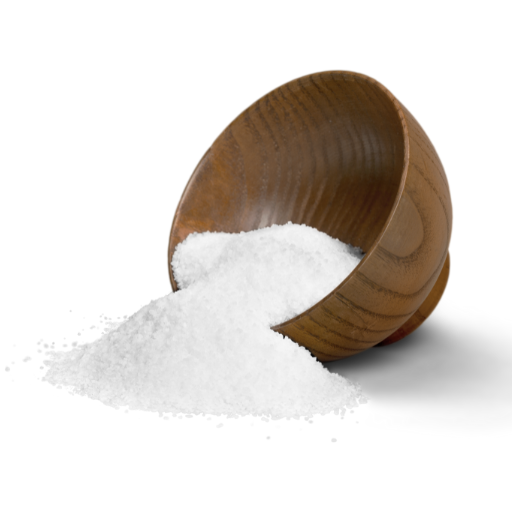
Plants may indicate a number of symptoms that suggest the possibility of Epsom salt overdose. For example, imbalances in magnesium can lead to leaf yellowing or interveinal chlorosis, which is when the area between the veins turns yellow while the veins themselves remain green. Excessive use will cause salt build up in soil resulting in reduced water uptake and damage to roots. Soil testing should be done regularly to measure magnesium levels and ensure they are within optimum range. In hydroponic systems, it is important to often check for electrical conductivity levels of nutrient solution and its pH value. If any nutrient imbalance is detected, immediate corrective action should be taken to avoid causing permanent damage on plants if not death itself. Quick resolution of these potential problems based on precise measurements and compliance with recommended techniques is guaranteed to keep gardens productive and healthy.
Symptoms Associated with Overuse of Epsom Salts
One of the major indications for excessive use of Epsom salts is white crusts on topsoil, which indicate that salt buildup has occurred over time on this soil surface. High salinity causes interference with a plant’s water absorption thereby making even adequately irrigated crops exhibit drought stress signs such as wilting, leaf scorching and necrosis or browning at leaf edges due high content of salt in soil solution. Another significant symptom which needs monitoring is the electrical conductivity (EC) either for soil or nutrient solution. EC values higher than 2.0 mS/cm could mean the presence of too many salts.
In hydroponic systems where EC keeps rising coupled with decreased water uptake, an oversupply of Epsom salts might be implied. On another note, some reasons why there would be no response towards typical nutrient adjustment may be indicated by leaf yellowing caused by excessive levels of magnesium among other nutrients in general was not corrected by making normal nutrition adjustments! Regular EC checks and soil tests are needed to keep the EC between 1.2 and 2.0 mS/cm. This can be remedied by diluting the nutrient solution with fresh water or flushing the soil to remove excess salts. Adhering to these technical parameters prevents long-term adverse effects and maintains healthy plant growth.
Epsom Salt as Part of a Balanced Garden Nutrient Program
Epsom salt must be used in such a way that it is balanced with other nutrients in gardens for optimum plant health. Magnesium sulfate, which makes up Epsom salt, is useful in chlorophyll production and activation of enzymes for metabolism. However, excessive magnesium may hinder assimilation of essential elements like calcium and potassium. Calcium levels should range from 1000-2000 ppm in soils to enhance root development and formation of strong cell walls. Potassium at 150-200 ppm promotes photosynthesis, water balance and enzyme activity.
Nutrient balance is achieved through regular soil and water tests that guide fertilization adjustments accordingly For example, if magnesium levels exceed optimal ranges (about 25-50 ppm), reducing Epsom salt applications while increasing calcium supplementation with gypsum or calcium nitrate will help restore balance Nitrogen, phosphorus and potassium levels should be determined by comprehensive soil analysis so as not to counterbalance Mg uptake by plants When adding Epsom salt to your garden, apply at a rate of one tablespoon per gallon of water on a bi-weekly basis This ensures there is enough magnesium without causing any imbalance about other nutrients required by plants
How to conduct soil tests for optimum PH levels.
To have the correct readings and suitable corrections, conducting soil tests for optimum pH level involves some exact steps. When you want to get a pH reading for your garden, use a soil pH test kit or digital pH meter and take multiple soil samples from various garden sections. Mix these samples thoroughly with the provided testing solution and directly measure using the pH meter. Most plants prefer a slightly acidic or alkaline temperature in their soil, but the best range is between 6.0 and 7.0. Alternatively, lime or wood ash is used to raise its PH level, while sulfur can be added if it needs lowering. The practice of regularly monitoring and adjusting ensures that soil conditions remain favorable for plant health as well as nutrient uptake by plants.
Identifying and Treating Common Nutrient Deficiencies
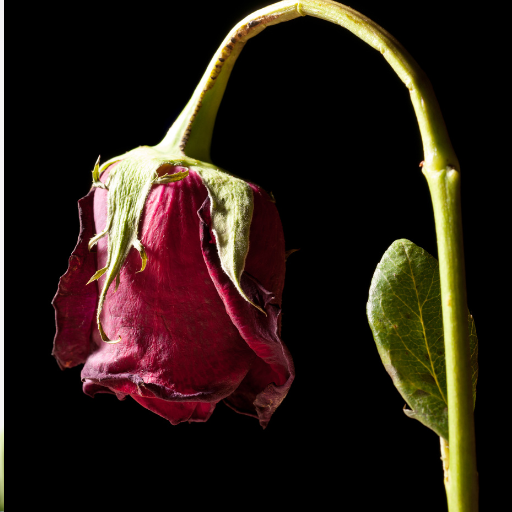
It is often easy to identify and treat nutrient deficiencies in plants. Symptoms of common malnourished plants are distinctive, and their identification can lead to efficient treatment that may reinstate the health of plants. Nitrogen deficiency typically manifests as the yellowing of old leaves with stunted growth, indicating nitrogen-rich fertilizers such as ammonium sulfate or urea. Phosphorus inadequacy is characterized by dark green or purplish foliage and possible delay in flowering and fruiting; therefore, bone meal or superphosphate should be applied. Potassium deficiency normally shows itself through yellowing or browning leaf edges, alongside low disease resistance. This problem can be addressed by adding potassium sulfate or potassium chloride to the soil. Regularly checking plant health and soil nutrient levels and then amending them accordingly ensures prompt correction of nutrient deficiencies, hence promoting strong growth and productivity.
Identifying a Magnesium Deficient Flowering Plant
Magnesium deficiency in flowering plants is usually marked by interveinal chlorosis, where the tissue between the veins turns yellow while the veins remain green, especially on older leaves. If it becomes serious enough, this condition also causes twisting leaves, sometimes with red or purple blotches. Enzyme activation which is vital for photosynthesis and overall plant health depends on magnesium for proper function since it’s an important constituent of chlorophyll.
Soil testing should establish magnesium levels lower than 25-50 ppm (parts per million). Epsom salts (magnesium sulfate) are commonly used when there is a shortage in soil magnesium at a rate of 1 tbsp per gallon of water or 1-2 lbs/100 sq. ft for soil application. However, dolomitic lime can serve if both magnesium and pH adjustment are required following recommendations from a soil test report. Proper identification and overcoming of magnesium deficiency enable flowered plants to maintain steady development, producing quality yield.
Symptoms Of A Lack Of Sulfur In Flowers
In flowering plants, sulfur deficiency is usually characterized by a general yellowing of the leaves, called chlorosis, especially in young leaves. Contrary to nitrogen deprivation, which first affects older leaves, sulfur deficiency affects new growth. Since it is an important constituent of amino acids, proteins, and enzymes, sulfur is required for various metabolic functions.
Technically, the amount of sulfur needed is less than that needed for major nutrients, but its role in plant health cannot be ignored. The recommended range for deficient levels of sulphur is 15-30 ppm. Elemental sulfur or sulfate forms such as gypsum (calcium sulfate) or ammonium sulfate can be used to rectify sulfur deficiencies in the soil. For foliar applications, mix 1 tsp Epsom salts (magnesium sulfate) per gallon water. Gypsum should be applied to soil at a rate of 20-30 lbs per 1000 sq ft while ammonium sulfate should be applied at a rate of 5-10 lb/1000 sq ft based on soil tests and crop requirements. Correcting sulfur deficiency ensures robust plant growth and optimal bloom quality.
Gardeners can ensure that flowering plants remain healthy and productive by maintaining appropriate sulfur levels and conducting regular soil tests.
Curing These Deficiencies with Epsom Salts
Magnesium sulfate (MgSO₄), otherwise known as Epsom salt, takes care of magnesium and sulfur deficiencies in flowering plants. When used correctly it is an immediate source of magnesium and sulfur essential for chlorophyll production and several metabolic processes. According to the findings by gardening experts, the recommended rate of foliar application ranges between 1-2 tablespoons per gallon of water for Epsom salts. This mixture should be sprayed directly into the leaves monthly during the growing season. Soil application may consist of 1 teaspoon per foot plant height dispersed evenly around the root zone and then thoroughly watered in.
Technically, Epsom salt’s magnesium content moves quickly to correct interveinal chlorosis in leaves that typically indicates magnesium deficiency. At the same time, sulfur is needed to synthesize some types of amino acids and proteins. Application rates may be determined using highly advisable soil tests. Analysis shows that an ideal soil for optimum plant growth should contain 25-50 ppm Mg and 15-30 ppm S. A good utilization of Epsom salt ensures that plants fulfill their nutritional requirements and exceed them too thus promoting vigorous growth and profuse flowering.
Comparing Epsom Salt to Other Supplements
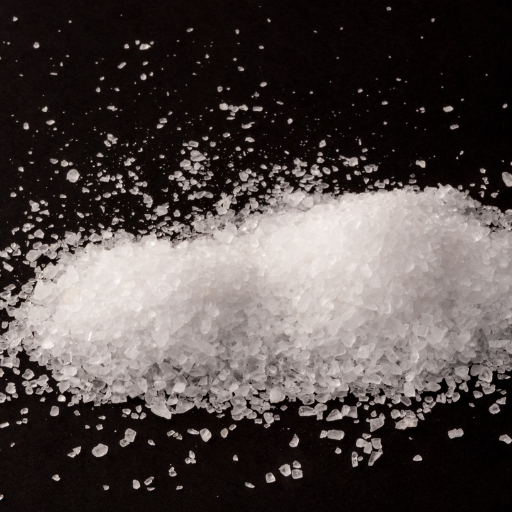
While contrasting Epsom salt and other fertilizers, it is pertinent to know the distinct advantages and disadvantages of each. Epsom salt or magnesium sulfate is best for quick correction of magnesium deficiencies and increasing chlorophyll in plants. Conversely, products like calcium nitrate provide essential nutrients like nitrate nitrogen and calcium that are necessary for strong cell structure and fast growth, respectively. Micronutrient supplements are meant to cure specific nutrient imbalances that Epsom salt does not know about.
Even if it dissolves easily and can be applied without much trouble, it does not contain nitrogen, phosphorus, or potassium, which is vital for good plant health. Complete fertilizers often require N-P-K ratios for balanced nutrition. Also, organics such as fish emulsion or seaweed extracts usually contain essential elements that enhance soil fertility and stimulate microbial activities. The most appropriate supplement can be determined by proper soil assessment and understanding the needs peculiar to each plant to ensure optimum growth and productivity.
Traditional Fertilizers Compared to Epsom Salt
To compare traditional fertilizers with Epsom salt one has to realize their unique roles in plants as well as the nature of their chemical composition. Magnesium Sulfate (MgSO4), also known as Epsom salt mainly targets Mg and S shortages in a garden. Chlorophyll’s primary component is magnesium, which plays an important role during photosynthesis; on the other hand, sulfur aids in synthesizing amino acids.
In contrast to traditional forms of fertilizer, which usually contain equal amounts of nitrogen (N), phosphorous (P), and potash (K) at various concentrations called N-P-K ratios, a 10-10-10 refers to equal proportions of these 3 essential nutrients supporting overall plant development and root formation, among other aspects.
These include;
- Nutrient Composition:
-
- Epsom Salt: Magnesium Sulfate (MgSO₄) 9.8% magnesium and 13% sulfur by weight.
- N-P-K (e.g., 10-10-10): 10% nitrogen, 10% phosphorus, 10% potassium.
- Calcium Nitrate: 15.5% nitrogen, 19% calcium.
- Application Rates:
-
- Epsom Salt: A foliar spray or a soil drench of about one to two tablespoons per gallon of water is used.
- Traditional Fertilizers: The amount to be applied varies widely. For example, general usage could be between one and two pounds per hundred square feet, depending on the particular crop and soil conditions.
- Solubility and Availability:
-
- Epsom Salt: Being highly soluble it ensures high uptake rates for both magnesium plus sulfur nutrients in plants.
- N-P-K Fertilizers: Their solubility differs as there are those that are made to dissolve slowly thus continuously providing for availability of nutrients over an extended period.
These supplements can be combined to maximize plant health—instant supplementation with Epsom salt containing magnesium and sulfur and broader spectrum nutrient availability from traditional fertilizers. It’s always advisable to carry out soil tests before application to enable effective treatment for specific crops as needed by the farm owner or operator.
Cost Effectiveness and Availability of Epsom Salt
Epsom salt has gained popularity for its low prices and ready accessibility. Generally, it is cheaper than other fertilizers, thereby making many people use it, including farmers who grow crops on a large scale basis, as well as participants involved in small gardening ventures at home. In most places, Epsom salts are found in several outlets such as garden stores, pharmacies, and online sites, making it easier to acquire them. Many gardeners and farmers use the mineral because it can be bought cheaply and serves different functions, such as boosting chlorophyll production, facilitating nutrient uptake, and managing some plant diseases.
Reference sources
- HGTV: Epsom Salts for Plants: Generations of gardeners have endorsed Epsom salts, claiming it helps plants grow bushier, produce more flowers, and enhances color. The article provides detailed insights into its application methods and benefits.
- Gardening Know How: Information About Using Epsom Salts For Plants: This source discusses the potential benefits of using Epsom salt as a fertilizer, including its ability to improve flower blooming and enhance plant’s green color, contributing to more vigorous growth.
- Trees.com: Tips For Using Epsom Salt In The Garden: The article explains how magnesium, a key component of Epsom salt, can make plants greener and supports the idea that its use in gardening may improve the overall health and appearance of flowering plants.
Frequently Asked Questions (FAQs)
Q: How does epsom salt benefit flowering plants?
A: Epsom salt is a natural source of magnesium sulfate, which is crucial for the health and growth of flowering plants. It can help improve flower blooming, enhance the plant’s green color, and maximize nutrient uptake.
Q: Can using epsom salt in the garden improve the overall health of garden plants?
A: Yes, using epsom salt in the garden can benefit many types of garden plants. The magnesium in epsom salt helps strengthen cell walls and improve the plant’s ability to photosynthesize, leading to healthier and more vibrant plants.
Q: How should I mix epsom salt for plants?
A: To mix epsom salt for plants, dissolve two tablespoons of epsom salt in a gallon of water. You can use this solution as a foliar spray or apply it directly to the soil around the base of the plants.
Q: Is epsom salt good for rose plants?
A: Yes, epsom salt can be very beneficial for rose plants. It can help promote larger, more vibrant blooms and improve the overall health of the plant by providing essential magnesium and sulfate.
Q: Are there any risks associated with using too much epsom salt for plants?
A: Using too much epsom salt for plants can lead to an accumulation of magnesium in the soil, which can cause imbalances and potentially harm the plants. It’s important to follow recommended guidelines for application.
Q: Can potted plants benefit from epsom salt?
A: Absolutely, potted plants can also benefit from epsom salt. The magnesium sulfate in epsom salt aids in better nutrient absorption and promotes healthier growth, just ensure they are watered correctly to avoid oversaturation.
Q: How often should I add epsom salt to plants in my garden?
A: Generally, you can apply a solution of two tablespoons of epsom salt per gallon of water once a month. However, it’s essential to observe your plants and adjust the frequency based on their specific needs and health conditions.
Q: What are some ways to use epsom salt in gardening beyond just mixing it with water?
A: Besides mixing epsom salt with water for a foliar spray, you can sprinkle it directly around the base of plants, or use it as a soil amendment when planting new seedlings. Each method can help provide essential nutrients to the plants.
Q: How does epsom salt help in preventing blossom end rot in plants like tomatoes?
A: Blossom end rot is often caused by a calcium deficiency, but the magnesium in epsom salt can help the plant better absorb calcium from the soil. Regular application of epsom salt solutions can therefore help reduce the occurrence of blossom end rot.






